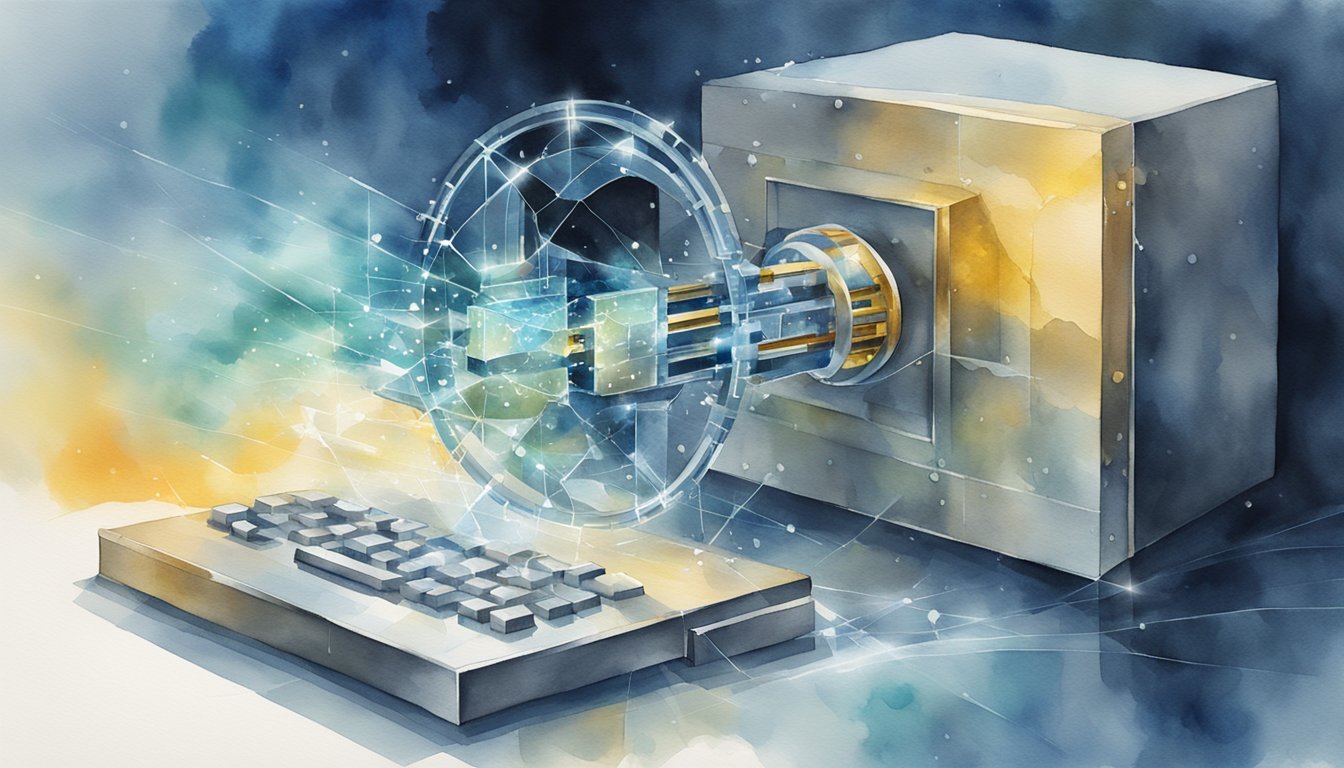Understanding Quantum Computing
This section delves into the revolutionary domain of quantum computing, from its fundamental principles to its implications for the future of information security.
Quantum Computing Basics
Quantum computing represents a significant leap from classical computing by harnessing quantum mechanics to process information. Unlike classical computers, which use bits that are either 0s or 1s, quantum computers operate with qubits, which can represent both 0 and 1 simultaneously thanks to a phenomenon known as superposition. This ability allows quantum computers to perform complex calculations at unprecedented speeds.
Another critical feature of qubits is entanglement, where the state of one qubit can depend on the state of another, no matter the distance separating them. Entanglement enables quantum computers to carry out many calculations in parallel, vastly increasing their computing capabilities.
Quantum Cryptography
Quantum cryptography is a method of secure communication that employs the principles of quantum mechanics. It leverages the unpredictable nature of quantum states to create cryptographic keys that are theoretically impossible to intercept or duplicate without detection. As quantum computers threaten contemporary encryption methods, advancements in quantum cryptography are essential for ensuring future communications security.
With the development of algorithms running on future quantum computers, traditional encryption methods such as RSA could become obsolete. Quantum-proof cryptography is being developed to withstand the capabilities of quantum machines, aiming to secure information against the potential threats posed by these powerful systems.
Quantum Computers and Qubits
The construction of quantum computers revolves around the creation and manipulation of qubits. Qubits are the cornerstone of quantum computation, and their stability is vital to the operation of quantum computers. Researchers are experimenting with various physical systems to create qubits, such as ions, superconducting circuits, and topological structures.
Achieving precise control over qubits for sustaining them long enough to perform calculations is one of the biggest challenges in quantum computation. Quantum error correction and improving qubit coherence are active areas of research that aim to address this issue. Additionally, quantum algorithms are designed to take advantage of quantum properties, such as superposition and entanglement, which could solve complex problems exponentially faster than classical computers.
Impact on Encryption and Security

Quantum computing introduces significant challenges and transformative potential in the field of encryption and cybersecurity. Through substantial advancements in computational power, quantum computers present a threat to existing encryption methods but also pave the way for new, secure quantum-resistant solutions.
Challenges to Current Encryption Standards
Quantum computers leverage principles of quantum mechanics to perform calculations at speeds unattainable by conventional computers. This advancement presents a critical threat to current cryptographic systems such as RSA and public-key cryptography, which rely on the difficulty of prime factorization—a problem that quantum computers could solve with relative ease using algorithms like Shor’s algorithm. For many communication systems, from secure key exchange between individuals (often referred to as Alice and Bob in cryptographic examples) to safeguarding national security, the advent of quantum computation could render the previously formidable RSA algorithm insufficient.
Development of Quantum-Resistant Algorithms
In response to these impending vulnerabilities, the field of post-quantum cryptography has emerged, focusing on the development of encryption methods impervious to quantum attacks. The National Institute of Standards and Technology (NIST) has been instrumental in fostering research toward quantum-resistant algorithms. One such algorithm is NTRU, which is based on the hardness of lattice problems as opposed to the factorization of prime numbers, and provides a more secure alternative to RSA in the quantum era.
Practical Implications and Future Outlook
As quantum technology progresses, the transition to quantum-safe cryptography becomes imperative for maintaining privacy and security in digital communications. Current infrastructure must evolve to integrate these new cryptographic methods to protect against quantum threats. The future outlook involves a gradual phase of adoption, with institutions like the US National Institute of Standards and Technology (NIST) laying the groundwork for standards that ensure a smooth transition to a quantum-resistant state. Quantum key distribution (QKD) is already being explored as a method for secure communication that does not rely on the hardness of mathematical problems and could provide a novel means of establishing secure channels resistant to quantum decryption methods.

